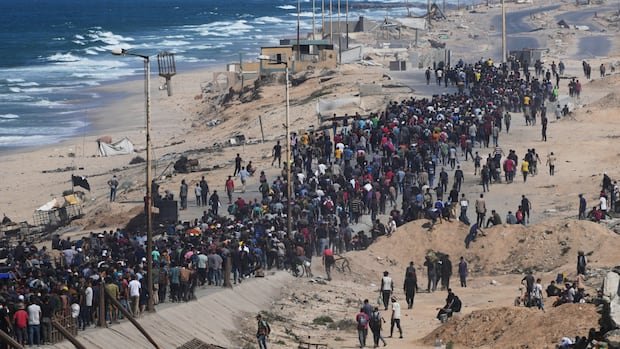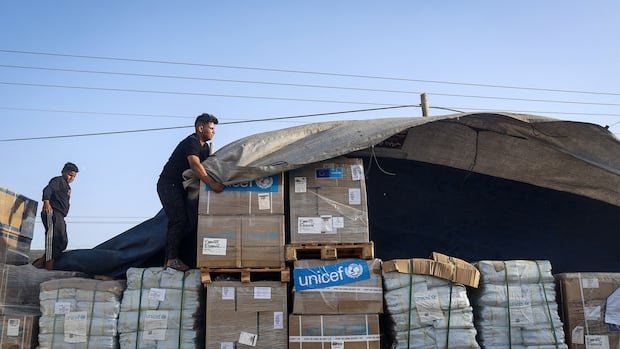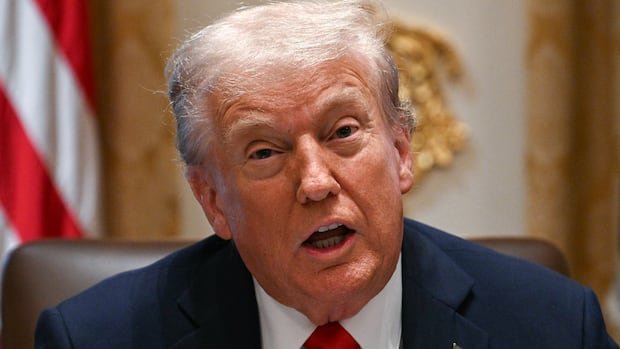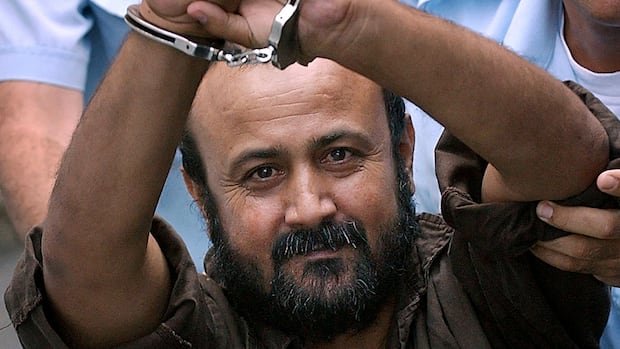Thousands of displaced Palestinians streamed back toward their abandoned homes on Friday after a ceasefire between Israel and Hamas went into effect and Israeli troops began pulling back from parts of Gaza.
A massive column of displaced Gazans filed north through the dust toward Gaza City, the enclave’s biggest urban area, which had been under attack just days ago in one of Israel’s biggest offensives of the war.
“Thank God my house is still standing,” said Ismail Zayda, 40, in the Sheikh Radwan area in Gaza City. “But the place is destroyed, my neighbours’ houses are destroyed, entire districts have gone.”
The Israeli military said the ceasefire agreement had been activated at noon local time. Israel’s government ratified the ceasefire with Hamas in the early hours of Friday, clearing the way to partially pull back troops and fully suspend hostilities in Gaza within 24 hours.
Hamas is expected to release the 20 living Israeli hostages within 72 hours, after which Israel will release 250 Palestinians serving long terms in Israeli prisons, as well as 1,700 others detained in Gaza during the war.
Israel and Hamas have finally agreed on a multi-phase plan to end the war in Gaza and bring about the release of dozens of Israeli hostages and potentially thousands of Palestinian prisoners. Andrew Chang breaks down key moments that turned the tide, and why it’s only now that both sides have accepted a deal.
Images provided by Getty Images, The Canadian Press and Reuters.
Israeli Prime Minister Benjamin Netanyahu said that Israeli forces will remain in Gaza to exert pressure on Hamas until the group disarms.
“If this is achieved the easy way, then that will be good. And if not, then it will be achieved the hard way,” he said in a televised address on Friday.
U.S. Special Envoy to the Middle East Steve Witkoff said the Israeli military had completed the first phase of a withdrawal in Gaza and that the hostage release period had started.
The first phase of a 20-point plan led by U.S. President Donald Trump’s administration to end the two-year war in Gaza calls for Israeli forces to withdraw from some of Gaza’s major urban areas, though they will still control roughly half of the enclave’s territory.
Rescue workers reach new areas
Once the agreement is operating, trucks carrying food and medical aid will surge into Gaza to help civilians, hundreds of thousands of whom have been sheltering in tents after Israeli forces destroyed their homes and razed entire cities.
In Khan Younis, in the southern Gaza Strip, some Israeli troops pulled back from the eastern area near the border, but tank shelling was heard, according to residents in contact with Reuters.
According to U.S. President Donald Trump’s 20-point Gaza peace plan, the flow of aid into the territory should resume as soon as the deal is signed — but will it happen and will it be enough? For The National, CBC’s Eli Glasner looks at where things stand now with the humanitarian groups on the ground.
In Nusseirat camp, in the centre of the enclave, some Israeli soldiers dismantled their position and headed east toward the Israeli border, but other troops remained in the area after gunfire was heard in the early hours of Friday.
Israeli forces pulled out from the road along the Mediterranean coast into Gaza City, where hundreds of people had gathered, hoping to return to the enclave’s main urban centre, which has been under Israeli assault for the past month.
Gunfire nearby made many reluctant to move, and only a few were attempting to cross on foot, residents said.
Rescue workers in Gaza City began missions in areas they had been unable to reach before. Medics said at least 10 bodies were recovered from previous strikes.
“As soon as we heard the news of the truce and ceasefire, we were very happy and got ready to go back to Gaza City, to our homes. Of course there are no homes — they’ve been destroyed,” said Mahdi Saqla, 40.
“For two years we’ve been suffering, displaced from place to place,” Sagla added.
Front Burner30:54Portraits of childhood in Gaza
List of Palestinian prisoners not confirmed
The war has deepened Israel’s international isolation and upended the Middle East, spreading into a regional conflict that drew in Iran, Yemen and Lebanon.
Israelis and Palestinians alike rejoiced after the deal was announced, the biggest step yet to end two years of war in which more than 67,000 Palestinians have been killed and will return the last hostages seized by Hamas in the deadly Oct. 7, 2023, attacks that provoked it.
U.S. President Donald Trump is touting the peace deal between Israel and Hamas he helped broker as a major diplomatic achievement. While some question the stability of the peace, for now, even some Democrats and critics are acknowledging the accomplishment.
The exiled Gaza chief of Hamas, Khalil Al-Hayya, said he had received guarantees from the United States and other mediators that the war was over.
Hamas, considered a terrorist entity by several countries, including Canada, has indicated that recovering the bodies of the dead may take longer than releasing those who are alive.
Much could still go wrong before the accord is fully implemented. The sides have yet to publish the list of Palestinian prisoners to be released in exchange for Israeli hostages. Hamas is seeking freedom for some of the most prominent Palestinian convicts held in Israeli jails, as well as hundreds of people detained during Israel’s assault.
Despite more than two decades in an Israeli jail, Marwan Barghouti remains the most popular Palestinian leader. For The National, CBC’s Margaret Evans explains why some say his release is key to peace in the region — and why that would be a hard ask for Israel.
Further steps in the 20-point plan have yet to be agreed upon. Those include how the demolished Gaza Strip is to be ruled when the fighting ends and the ultimate fate of Hamas, which has so far rejected Israel’s demands to disarm.
The Hamas-run Interior Ministry said Friday it would deploy security forces in areas where the Israeli army withdrew.
It was not immediately clear whether fighters would return to the streets in significant numbers as they did during earlier ceasefires, a move that would be viewed by Israel as a provocation.
Netanyahu also faces skepticism from within his governing coalition, as many have long opposed any deal with Hamas.
Trump said he would head to the region on Sunday, possibly to attend a signing ceremony in Egypt. Knesset Speaker Amir Ohana invited him to address the Israeli parliament.
The deal received support from Arab and Western countries and was widely portrayed as a major diplomatic achievement for Trump.
The United States will deploy 200 troops as part of a joint task force for Gaza stability, with no Americans on the ground in the Palestinian enclave, two senior U.S. officials said on Thursday.
The officials, speaking to reporters on condition of anonymity, said the 200 would be a core part of a task force that would include Egyptians, Qataris, Turks and probably Emiratis.
More than 67,000 Palestinians have been killed in Israel’s assault on Gaza, launched after Hamas-led militants stormed through Israeli towns and a music festival on Oct. 7, 2023, killing 1,200 people and capturing 251 hostages. The dead included Canadian citizens.




